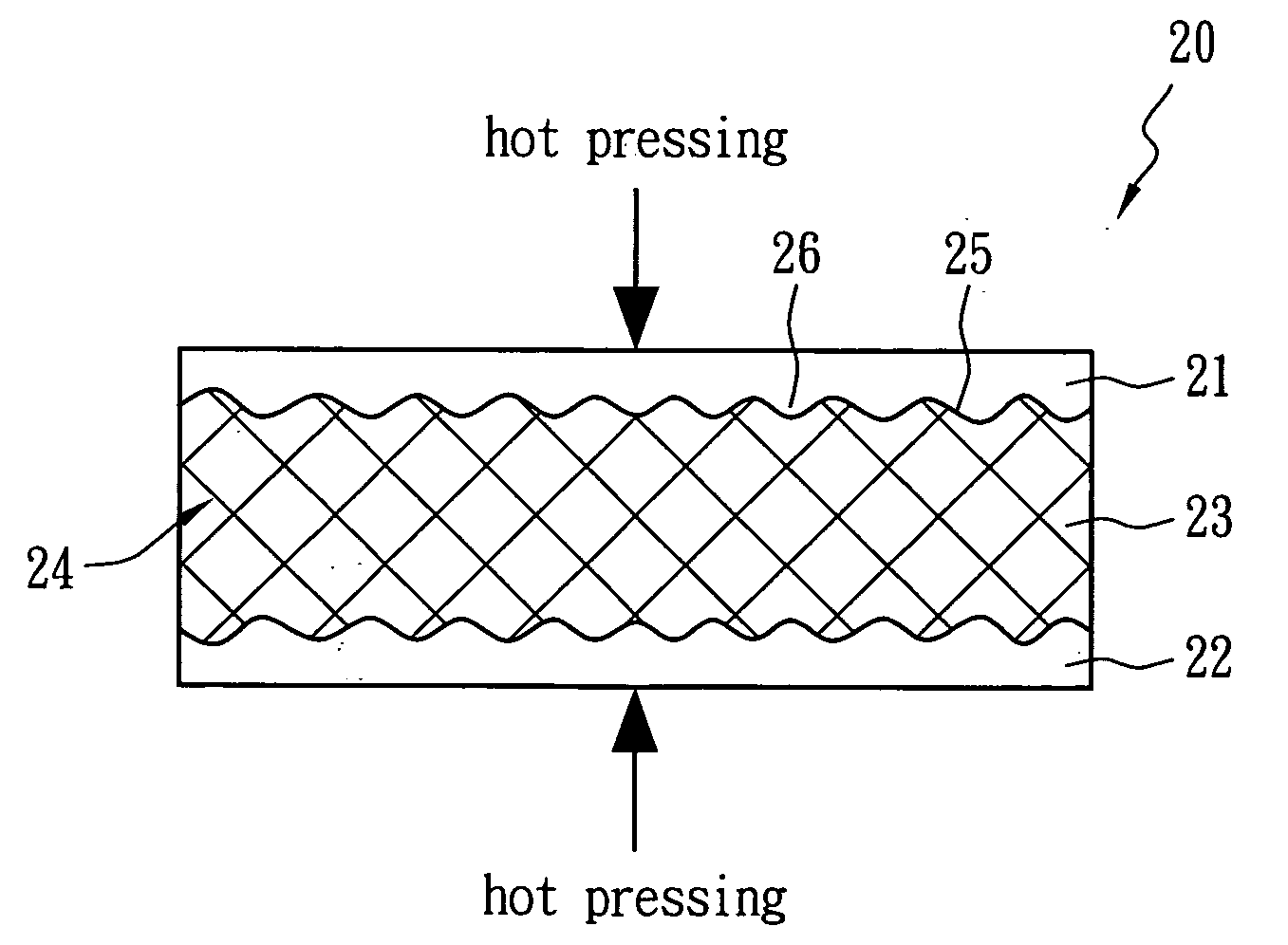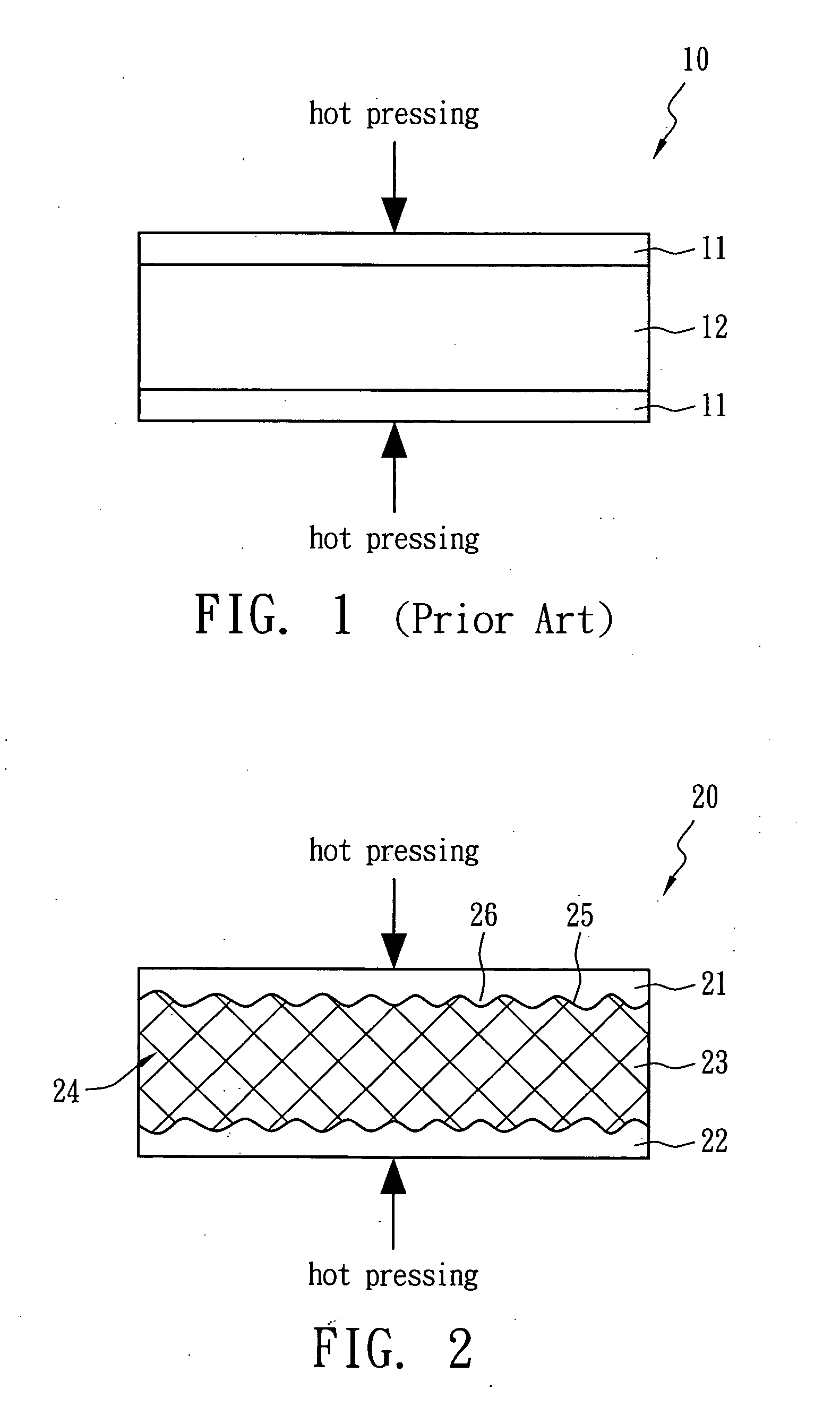Heat-conductive dielectric polymer material and heat dissipation substrate containing the same
a dielectric polymer and heat dissipation substrate technology, applied in the direction of thermoplastic polymer dielectrics, dielectric characteristics, plastic/resin/waxes insulators, etc., can solve the problem of affecting the heat dissipation efficiency affecting the intensity of the emitted light and the lifetime, and affecting the workability of the heat dissipation substrate, so as to achieve the effect of enhancing the workability and heat dis
- Summary
- Abstract
- Description
- Claims
- Application Information
AI Technical Summary
Benefits of technology
Problems solved by technology
Method used
Image
Examples
Embodiment Construction
[0012]The heat-conductive dielectric polymer material of the present invention includes a polymer component, a curing agent, and a heat-conductive filler having an IPN structure. The polymer component includes a thermoplastic plastic and a thermosetting epoxy resin; calculated on the basis of volume percentage, the thermosetting epoxy resin comprises 10% to 75% of the polymer component. The curing agent is used to cure the thermosetting epoxy resin under a curing temperature. The heat-conductive filler is uniformly dispersed in the polymer component; calculated on the basis of volume percentage, it comprises 40% to 70% of the heat-conductive dielectric polymer material. The heat conductivity of the heat-conductive dielectric polymer material is larger than 0.5 W / mK.
[0013]FIG. 2 is a schematic view of a heat dissipation substrate 20 of the present invention. The heat dissipation substrate 20 includes a first metal layer 21, a second metal layer 22, and a heat-conductive dielectric po...
PUM
| Property | Measurement | Unit |
|---|---|---|
| temperature | aaaaa | aaaaa |
| voltage | aaaaa | aaaaa |
| thickness | aaaaa | aaaaa |
Abstract
Description
Claims
Application Information
 Login to View More
Login to View More - R&D
- Intellectual Property
- Life Sciences
- Materials
- Tech Scout
- Unparalleled Data Quality
- Higher Quality Content
- 60% Fewer Hallucinations
Browse by: Latest US Patents, China's latest patents, Technical Efficacy Thesaurus, Application Domain, Technology Topic, Popular Technical Reports.
© 2025 PatSnap. All rights reserved.Legal|Privacy policy|Modern Slavery Act Transparency Statement|Sitemap|About US| Contact US: help@patsnap.com


